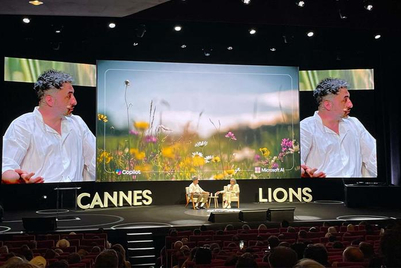
Gaming’s rapid growth since people around the world picked up their controllers to escape the drudgery of Covid-19 lockdowns shows no sign of slowing. Bain predicts that the industry’s global revenue could grow by more than 50% over the next five years to $300 billion.
As gaming has gone mainstream, with 3.24 billion gamers globally, its reputation as the domain of socially-challenged men looks increasingly outdated. Online gaming spaces are opening up to diverse new audiences, and becoming more inclusive. This shift in gaming culture is being led by a new generation of ‘gamefluencers’.
Gamefluencers are gamers with vast followings on platforms like Twitch and Discord. They are not only entertaining their audiences through live gaming, but engaging with them in different parts of their lives, forming close bonds and creating a sense of community that goes beyond gaming.
What sets them apart from other influencers is that, because of 24/7 video game steaming, they are accessible to their followers and communities for hours on end. With constant live-streaming and live-chatting, their connections with their followers can run deeper and true friendships are formed, with the result that gamefluencers turn virtual spaces into social hubs connecting tight-knit communities.
This deep connection has made them extremely popular, just under 1 in 10 consumers worldwide following gamefluencers, according to YouGov data.
Gamers tend to fall into three categories: specialists; critics; superfans; and entertainers. Specialists are skilled in a specific game or genre and many have large followings, making great partners and collaborators for brands looking for a wide reach. These include Helm (6.1K Twitch followers), and Ambush (102K Twitch followers).

Critics, such as Mikafabs (1,7K Twitter followers), are industry experts and their followers look to them for the latest gaming recommendations. They offer an opportunity for brands wanting to boost their credibility in the space.
Superfans, such as Janellyace (9.7K Twitch followers), and Touchpadwarrior (12.8K Twitch followers), are known for their deep love of a specific game or genre. Brands can leverage their enthusiasm and passion to engage new audiences.
Meanwhile, the ‘entertainers’ are gamefluencers with big personalities who play a wide range of games. These include Pablodragqueen (6.2K Twitch followers) and Mezame (1.6K Twitch followers).

Changing culture through connection, humour and representation
Gamefluencers command their audiences through connection, humour and representation. Twitch, YouTube and Discord open a window into their personal lives and so followers can connect more closely with them and get a two-way communication.
Gamefluencers use humour to engage with fans – they tend to be funny or irreverent, and so brands working with them should take the opportunity to show off their playful side.
Representation is also a hugely important aspect of the rise of gamefluencers. For example, gamefluencers representing LGBTQ+ communities, such as Stream Queens, an all-drag team on Twitch and Pablodragqueen, an Australia-based drag artist and gamefluencer, are changing perceptions of what a typical gamer looks like.
As Ambush, a female gamefluencer, explains: “I’m very proud that I’ve been able to bring more females into gaming and live streaming, because we deserve to game.. and to kick ass.”
Brands must align with the core values of gamefluencers
Brands working with gamefluencers should keep their campaign ideas grounded in their core values, which can be categorised as intimacy; joy; and inclusion. Intimacy is critical because, for gamefluencers, their followers are everything. With intimacy comes trust and reliability. Doritos was able to leverage this core value with its ‘Doritos Bowl’ contest, which saw elite gamers teaming up to play, fostering intimacy and trust through collaboration.
Joyful engagement is what keeps followers coming back for more. The atmosphere of a livestream tends to be joyful, as what happens is largely spontaneous. This gives brands permission to break the rules and have fun. Brands that have capitalised on this sense of joy include Pringles, who created a zombie character, Frank, whose escape from a game as it was played live on Twitch became one of the top 10 most-watched streams globally last year.

Crucially, this generation of gamefluencers are championing diversity and inclusion, and brands can do much to support them in that mission – as we saw with beer brand Pilsen Callao launching a gaming tool for deaf players.
Dos and don’ts of brand-gamefluencer partnerships
Gamers deeply value authenticity so a brand’s product or service must add some real value in the gamefluencer’s life. Followers will instantly detect when they are reading off a script or disingenuously pushing a product.
Remember, gamefluencers are not just another channel. Brands should think of them as a creative partner. They’re expert content creators and they know their followers best. Write briefs with their personalities in mind and offer them the freedom of expression they need.
Successful gamers tend to establish themselves in a niche, which is great for brands targeting a specific audience segment. But for partnerships to succeed, brands must first do the required research on their chosen gamer and their community.
Gamefluencers have the potential to ignite brand love and engage audiences at a bigger scale then almost any other social channel. They also offer brands a unique opportunity to be irreverent and let loose. And with the metaverse opening up new virtual worlds, the fun is just beginning.
Chris Chong is CEO of We Are Social Singapore



.jpg&h=334&w=500&q=100&v=20250320&c=1)


.png&h=334&w=500&q=100&v=20250320&c=1)




.png&h=334&w=500&q=100&v=20250320&c=1)



.png&h=268&w=401&q=100&v=20250320&c=1)

.png&h=268&w=401&q=100&v=20250320&c=1)
.png&h=268&w=401&q=100&v=20250320&c=1)

